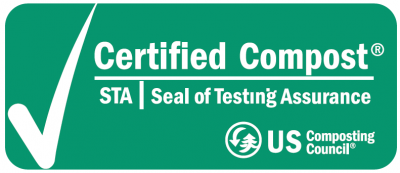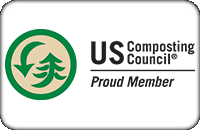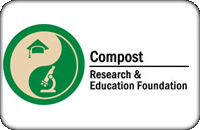Development of the TMECC & Benefits of the STA Program
Green infrastructure is a comprehensive term used primarily to describe natural solutions to stormwater management. Green infrastructure may include green roofs, bioretention soils, rain gardens, or compost blankets used for erosion control and slope stabilization. A critical component for success of all these applications is the use of compost. With increasing adoption of green infrastructure to solve stormwater challenges, sourcing the most appropriate high-quality compost for each application is more important than ever. The good news is that there are nationwide standards that can benefit any green infrastructure project: the Test Methods for the Evaluation of Compost & Composting and the United States Composting Council’s Seal of Testing Assurance Program.
The United States Composting Council (USCC) started in the early 1990’s as an industry group composed of compost producers, technology providers, equipment manufacturers, municipal entities, and compost researchers. These stakeholders came together to improve composting processes, promote compost uses, and market compost products. The USCC and non-profit Compost Research & Education Foundation (CREF), worked closely with the Environmental Protection Agency (EPA) and the United States Department of Agriculture (USDA) to develop the Test Methods for the Evaluation of Compost & Composting (TMECC) after reviewing decades of existing research. Structured similarly to the commonly used American Society of Testing & Materials (ASTM) standards, the TMECC provides a laboratory manual for all the testing methods related to the evaluation of compost. Specifications based on these universal standards can be used from New York to Texas, supporting the use of green infrastructure solutions nationwide.
The TMECC is the foundation for the USCC’s Seal of Testing Assurance (STA) Program. Hundreds of compost manufacturers throughout the United States have enrolled their compost in this program, which requires testing on a regular basis from one of thirteen independent laboratories. This means that every participating compost manufacturer will have up-to-date analysis of their compost using the TMECC methods for a variety of important characteristics, including organic matter, maturity, stability, pH, and gradation. When a firm like Naturcycle designs a soil blend or green roof media, compost analysis from the STA program can help determine which available compost is most appropriate for the application. Thanks to the TMECC standards and the STA program, recent standardized compost analysis is available for the landscape architect, engineer, or project manager on a green infrastructure project to evaluate, eliminating the uncertainty of comparing compost tested using differing methods.
Part Two of this series will examine how the Compost Analysis Proficiency (CAP) Program ensures high quality compost analysis for use in green infrastructure projects. Stay tuned!






